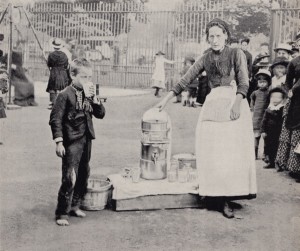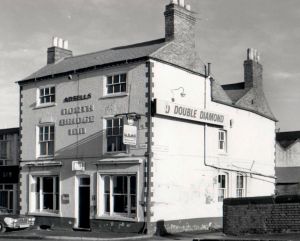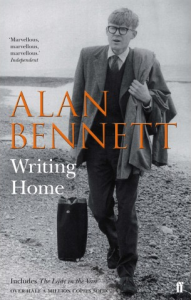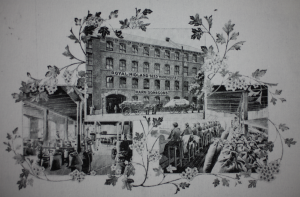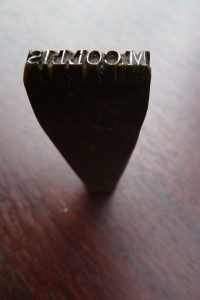Victorian London in Photographs: a free exhibition at the London Metropolitan Archives (5 May-8 Oct 2015)
If you’re visiting the LMA to carry out research, or you find yourself in the Farringdon area with half an hour to spare, then take a look at the Victorian London in Photographs exhibition on the first floor.
It’s a wide-ranging topic for a small gallery space, but this carefully curated selection gives a glimpse of how photography was used by Victorians to record life in London: its architecture, streetscapes and residents. Here are just three of the selections you have in store.
Sherbert sellers and street musicians: on your way up the staircase there’s a series of street vendor photos taken between 1884 and 1887 around Greenwich. They were commissioned by Charles Spurgeon who had recently taken over the South Street Baptist Chapel; he planned to use them as lantern slides, presumably as the basis for a lecture or two. Together they convey the breadth of goods and trades once hawked around the streets. In one (above), a sherbert seller quenches the thirst of a shoeless boy who appears in several of the photos – one hopes he was given a few pennies and the odd sherbert as he accompanied the photographer on his rounds. Other images depict a celery salesman, street musicians, a ‘try your weight’ machine, and two youths selling crockery from a cart outside the London & Naval Hotel (“White Bait and Fish Dinners, Hot Joints and Poultry” proclaims the hotel signage, “Try Our Shrimps in the Garden. 9d.”)
